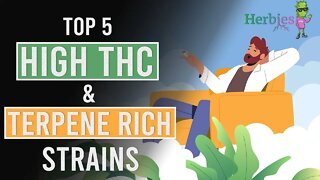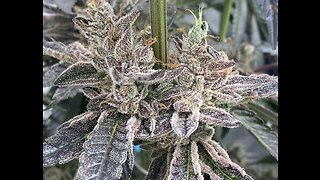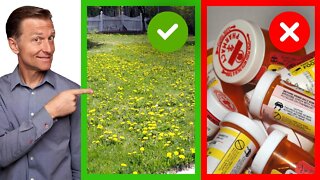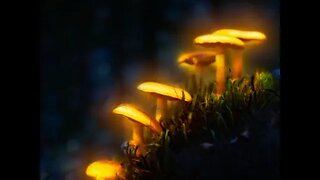𝗟𝗦𝗔 – The Legal LSD Substitute || Hawaiian Baby Woodrose / Morning Glory Seeds (𝘌𝘳𝘨𝘪𝘯𝘦)
In this video I conceptualize the Lysergic Acid Amide aka LSA. Sometimes referred to as Ergine, Hawaiian Baby Woodrose Seeds or Morning Glory Seeds; this is a naturally-occurring psychedelic substance of the lysergamide class.
► INSTAGRAM: @lowkey_fish ◄
https://instagram.com/lowkey_fish
► TWITTER: @lowkey_fish ◄
https://twitter.com/lowkey_fish
╔═╦╗╔╦╗╔═╦═╦╦╦╦╗╔═╗
║╚╣║║║╚╣╚╣╔╣╔╣║╚╣═╣
╠╗║╚╝║║╠╗║╚╣║║║║║═╣
╚═╩══╩═╩═╩═╩╝╚╩═╩═╝
Watch my next video to learn about SHROOMS vs LSD!
https://youtu.be/ruR-4sAGdiQ
Copyright ©️ 2022 Lowkey Fish. All rights reserved.
__________________________________________________________________________________________
This video articulates the gist of the following: Lysergic acid amide (also known as ergine, d-lysergic acid amide, d-lysergamide, and LSA) is a naturally-occurring psychedelic substance of the lysergamide class. LSA is an ergot alkaloid and the main psychoactive constituent of morning glory seeds. LSA is chemically related to LSD and is said to produce similar effects, although the extent to which it does is unclear. A chemical found in Morning Glory and Hawaiian Baby Woodrose seeds, which are often legally available. Has mental effects similar to LSD, although with almost no visual effects. It is famous for being very nauseating, and for causing excessive time dilation at higher doses. Morning glory vines are both decoration and pervasive pest, but people may not be aware that a compound in the seeds of these plants is associated with drug effects similar to that of LSD. Morning glory seeds contain alkaloids, which some may attempt to consume for a legal high. The primary psychoactive substance in the morning glory plant is ergine, or D-lysergic acid amide (LSA). The intoxicating effects of LSA are somewhat like the effects of D-lysergic acid diethylamide (LSD); however, side effects may be more severe. Seeds of the morning glory plant have been used since ancient times in ritual ceremonies. For example, the Maya used the plant in a beverage to facilitate communication with the spirits to predict the future or to come to an understanding of otherwise incomprehensible events. Though eating morning glory flowers may not be directly toxic, in large enough quantities, consuming the seeds can lead to diarrhea and hallucinations. A concentrated LSA extract may be abused by some. Many online drug forums provide discussions about extracting botanical LSA for recreational use, especially from an even more potent source than morning glories, the Hawaiian Baby Woodrose plant. LSD is a synthetic drug derived from ergot alkaloids and prepared in a laboratory by chemical synthesis. This drug was first isolated by Swiss scientist Albert Hofmann in 1938 but the hallucinogenic effects of the drug were not discovered until Hofmann himself accidentally consumed some of the drug in 1943. LSD’s effects can be very strong and unpredictable. A user may, at any time, experience a “bad trip” that results in an intensely negative, often quite frightening, experience. LSA—also known as ergine—is a psychedelic compound found in the seeds of several common plants, including morning glory (Ipomoea violacea), Hawaiian baby woodrose (Argyreia nervosa), and sleepy grass (Achnatherum robustum). It can also be found in certain fungi. The psychoactive properties of LSA stem from its alkaloid makeup; examples of other plant-based alkaloids include caffeine, nicotine, cocaine, and morphine. Because LSA tends to exert a sedative effect on the user, you’ll find that some sources classify it as a depressant, in addition to a psychedelic. If D-lysergic acid amide (LSA) sounds similar to D-lysergic acid diethylamide (LSD), that’s because it is. These chemical cousins are said to produce similar effects—which makes sense since LSA is also an ergoline alkaloid, which appears in different types of plants and fungi, including the ergot fungus from which LSD derives. LSA is found most commonly in the seeds of morning glory, a climbing vine with bright blue or purple trumpet-shaped flowers, as well as in the seeds of the Hawaiian baby woodrose, or elephant creeper, a similar vine that’s native to India. Hawaiian baby woodrose has long associations with Ayurvedic medicine and can be used to treat rheumatism and neurological disorders. Morning glory seeds and Hawaiian baby woodrose seeds can both be purchased inexpensively online or from a garden store. Be aware, however, that many commercial seeds are treated with pesticides and fungicides—some of which can be harmful if ingested. Most people report that LSA yields a less intense trip than LSD, and microgram for microgram, that’s true.
.
#Natural #Psychedelic #Organic #LSA #LSD #LysergicAcidAmide #LysergicAcid #Lysergic #Psychedelics #LegalHigh #LegalPsychedelic #LegalPsychedelics
.
Find me literally anywhere on the internet! Here is ALL of my links:
https://linktr.ee/lowkeyfish
-
 37:28
37:28
True Review
1 year agoLSA - "Natural LSD" (legal psychedelic review) Hawaiian Baby Woodrose Seeds
2465 -
 3:57
3:57
The Cannabis Experts
1 year ago $0.01 earnedTop 5 High THC & full of Terpenes strains by Herbies Seeds
184 -
 9:30
9:30
News And Media
1 year agoFinding Kratom Alternatives In 2023 As More States Ban It
162 -
 0:54
0:54
tErPwErKz710
10 months agoDutch Hawaiian Sativa Dominant Hybrid - Very Unique Blend
59 -
 1:26:05
1:26:05
Medical Medium
1 year agoAntioxidant & Spiritual Power of Wild Blueberries - Day 2 Medical Medium Wild Blueberry Challenge
104K28 -
 9:16
9:16
SierraDelta
3 months agoThe 10 Medicinal Seeds You Should Plant for a Complete Backyard Pharmacy
311 -
 6:15
6:15
Dr. Eric Berg
2 years ago#1 Backyard Weed That Can Replace ALL Your Medications
6743 -
 2:58
2:58
ionpanait2022
2 years agoBach, Original Flower Remedies, Rescue Sleep, Natural Sleep Aid, 0.7 fl oz (20 ml) Spray
3 -
 0:19
0:19
Lucky CBD Life
1 year agoUpgrade your morning coffee routine with this iced caramel latte made with HempWorx CBD coffee! ☕️
12 -
 5:07
5:07
Mycophiliac
11 months ago $0.11 earnedBest Mushrooms for Microdosing
9783